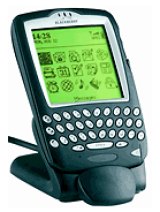
BlackBerry 6720
Discover the impressive specs and pricing of the 2003 BlackBerry 6720 mobile phone. Featuring a 3.0 monochrome display and 16MB memory, it's a must-have for BlackBerry fans. Get yours now!
Smartphone Specifications and Features Summary:
Announced: 2003, Q2
Status: Discontinued
Display: 3.0 inches Monochrome
OS: BlackBerry
Network: GSM
Memory: 16MB 1MB RAM
Battery: Removable Li-Ion
The Rise and Fall of the Iconic BlackBerry 6720
In the early 2000s, the world was introduced to a revolutionary device – the BlackBerry. For decades, it became synonymous with business, the go-to device for professionals, and a status symbol for those living in the fast-paced world. Among its many models, the BlackBerry 6720, launched in 2003, stood out for its compact design, reliable platform, and impressive features. Let's take a closer look at this iconic device and its journey in the ever-changing world of technology.Announced in the second quarter of 2003, the BlackBerry 6720 was a product of its time. Designed and marketed by Research in Motion (now known as BlackBerry Limited), it was one of the first smartphones with advanced email capabilities. It was primarily targeted towards businessmen, corporate executives, and government officials who needed to stay connected and access their emails on the go.
The BlackBerry 6720 came equipped with the BlackBerry operating system – a proprietary platform developed by Research in Motion. This platform was the backbone of all BlackBerry devices and was known for its stability, security, and efficient email management system.
One standout feature of the BlackBerry 6720 was its internal memory of 16MB and 1MB RAM. While this may seem minuscule compared to the storage capacities of smartphones today, it was considered impressive back then. Additionally, the device did not have a card slot for expandable storage, so users had to manage with the limited internal memory.
The BlackBerry 6720 had a 3.0-inch monochrome display, with a resolution of 160 x 160 pixels and a 1:1 screen-to-body ratio. The display may seem underwhelming by today's standards, but at the time, it was considered a decent size for a smartphone.
In terms of body and design, the BlackBerry 6720 was a little bulky, measuring at 121 x 77 x 18 mm and weighing 138g. It had a full QWERTY keyboard, a trademark feature of BlackBerry devices that made typing emails and messages a breeze. The device also had a mini-SIM card slot and a removable Li-Ion battery, with a standby time of up to 240 hours and talk time of up to 4 hours.
The BlackBerry 6720 operated on GSM technology and did not have GPRS or EDGE capabilities. It also did not have a camera – a feature that was becoming increasingly popular in other smartphones of the time. However, it did have a loudspeaker, monophonic ringtones, and an alert system that vibrated, making it suitable for both personal and professional use.
In terms of connectivity, the BlackBerry 6720 lacked some of the features we now take for granted, such as WLAN, Bluetooth, and positioning systems. It also did not have a radio, but it did have a proprietary USB port for charging and data transfer.
The BlackBerry 6720 also had a few additional features, such as an HTML browser and an organizer, making it useful for both work and personal tasks. It did not have any built-in sensors, and the color options were limited, but these were minor details compared to the overall functionality of the device.
The BlackBerry 6720 was popular during its time, with its compact design, reliable platform, and advanced email capabilities. However, as technology advanced and smartphones with more features and capabilities flooded the market, the once-iconic BlackBerry began to lose its charm.
In 2007, Apple launched the first iPhone, changing the game for smartphones forever. With a touchscreen display, a more user-friendly interface, and a host of apps, it was a tough competition for BlackBerry. Other tech giants such as Samsung, LG, and Motorola also began releasing their own smartphones, all equipped with advanced features like high-resolution cameras, faster processors, and unlimited storage options.
As a result, the BlackBerry 6720, along with other BlackBerry models, started to become obsolete. By 2016, BlackBerry's market share had dropped to a mere 0.2%, and in 2016, the company officially announced that it would no longer make smartphones.
The rise and fall of the BlackBerry 6720 is a reminder that in the fast-paced world of technology, no device or platform can remain on top forever. However, the impact of the BlackBerry 6720 and other BlackBerry models on the evolution of smartphones cannot be overlooked. It set the standards for email capabilities on smartphones and paved the way for future devices to come.
In conclusion, the BlackBerry 6720 may have been discontinued, but its legacy continues to live on. It will always be remembered as a trendsetter, a device that changed the way we communicate and manage our work on the go. Its rise and fall are a testament to the ever-evolving nature of technology, where innovation and adaptability are crucial for survival.
Latest BlackBerry 6720 Specs and Prices
LAUNCH
- Announced: 2003, Q2
- Status: Discontinued
PLATFORM
- Operating System: BlackBerry OS
MEMORY
- Card slot: No
- Internal: 16MB 1MB RAM
DISPLAY
- Type: Monochrome
- Size: 3.0 inches, 29.0 cm2 (~31.2% screen-to-body ratio)
- Resolution: 160 x 160 pixels, 1:1 ratio (~75 ppi density)
BODY
- Dimensions: 121 x 77 x 18 mm (4.76 x 3.03 x 0.71 in)
- Weight: 138 g (4.87 oz)
- Keyboard: QWERTY
- SIM: Mini-SIM
CAMERA
- -: No
BATTERY
- Type: Removable Li-Ion battery
- Stand by: Up to 240 h
- Talk time: Up to 4 h
CELLPHONE NETWORK
- Technology: GSM
- 2G bands: GSM 900 / 1800
- Gprs: -
- Edge: No
SOUND
- Loudspeaker : Yes
- Alert types: Vibration; Monophonic ringtones
- 3.5mm jack : No
COMMUNICATIONS
- WLAN: No
- Bluetooth: No
- Positioning: No
- Radio: No
- USB: Proprietary
FEATURES
- Sensors: -
- Browser: HTML - Organizer
MISCELLANEOUS
- Colors: -
Disclaimer: Specifications shown may be different from the actual product. We cannot guarantee that the information provided on this page is 100% correct. This content is provided for information purposes only. All information included herein is subject to change without notice.


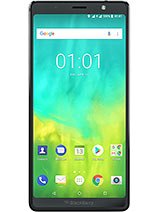
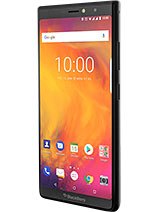
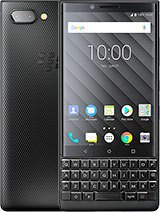
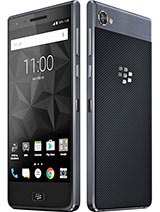
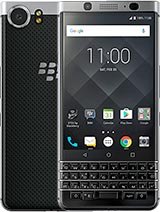

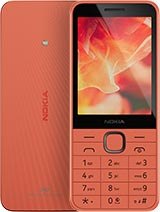


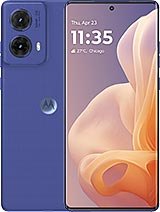


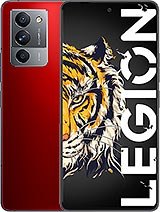
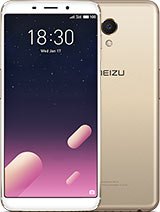



Leave your Opinion here